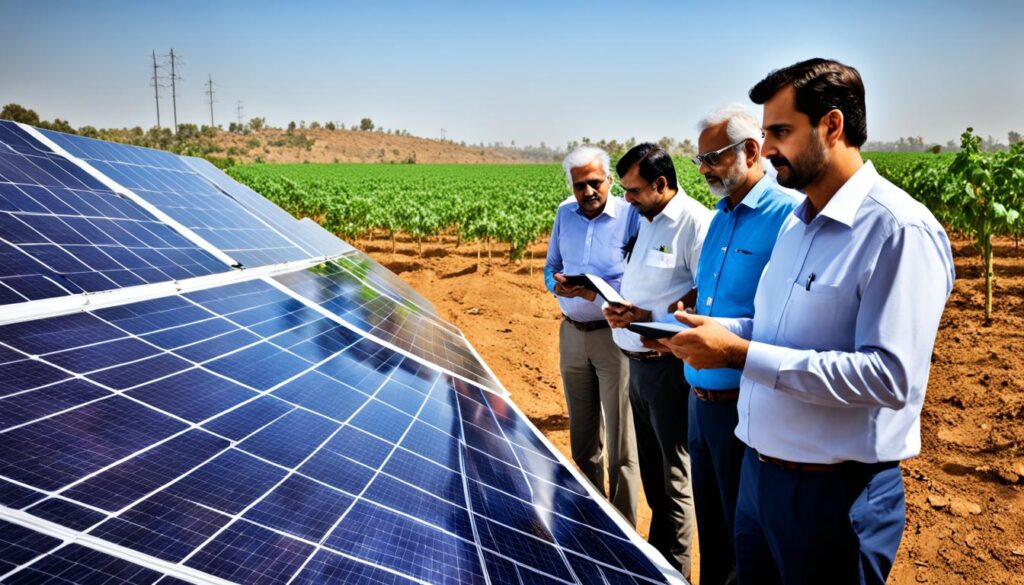India, with its abundant solar energy potential, has witnessed remarkable growth in the application of solar energy. The country receives about 5,000 trillion kWh per year energy incident over its land area, making it an ideal location for harnessing solar power. Solar energy has played a transformative role in India’s energy scenario, particularly in rural areas, where decentralized and distributed applications have brought numerous benefits.
Rural areas have experienced improved standards of living as a result of solar energy adoption. The deployment of solar power systems has alleviated drudgery among rural women by providing clean and affordable energy solutions for cooking, lighting, and water heating. Additionally, solar energy has created employment opportunities, contributing to economic development and poverty reduction.
In addition to its impact on rural areas, solar energy has emerged as a significant player in grid-connected power generation capacity. The National Solar Mission (NSM), launched in 2010, aims to establish India as a global leader in solar energy and enhance the nation’s energy security.
With the advancement of solar energy technology, India has witnessed the successful implementation of solar energy solutions in various industries. From powering factories and manufacturing units to providing electricity for agricultural irrigation, solar energy has proven to be a versatile and sustainable source of power.
Key Takeaways:
- Solar energy has had a significant impact on rural areas, improving living standards and creating employment opportunities.
- India’s National Solar Mission aims to establish the country as a global leader in solar energy.
- Solar energy is being widely adopted in various industries, including manufacturing and agriculture.
- The versatility and sustainability of solar energy make it an attractive option for India’s energy needs.
- Solar power has the potential to contribute to India’s energy security and reduce carbon emissions.
Government Initiatives and Policies to Promote Solar Energy
The Indian government has implemented various initiatives and policies to promote and accelerate the adoption of solar energy in the country. These measures aim to boost solar power generation, attract investments, and create a conducive environment for renewable energy development.
The Solar Park Scheme
The Solar Park Scheme is a flagship initiative by the government to establish large-scale solar parks across the country. The scheme aims to develop 50 solar parks with a total capacity of 38 GW by 2025-26. These solar parks provide the necessary infrastructure and facilities for the development of solar power projects, attracting both domestic and foreign investments. By leveraging economies of scale and pooling resources, the Solar Park Scheme significantly reduces the cost of solar power generation.
Grid Connected Solar Rooftop Scheme
The Grid Connected Solar Rooftop Scheme encourages the installation of solar panels on rooftops of residential, commercial, and industrial buildings. This scheme enables consumers to generate their own solar power and feed any excess power back into the grid. It not only promotes the use of clean energy but also allows consumers to reduce their electricity bills and contribute towards sustainability. The government provides financial incentives and subsidies to encourage the widespread adoption of grid-connected solar rooftop systems.
Promoting Renewable Energy through Green Energy Open Access Rules Application of Solar Energy
The government has introduced the Green Energy Open Access Rules to facilitate the purchase of renewable energy directly from generators by consumers. This enables consumers, such as industries and commercial establishments, to fulfill their renewable purchase obligation (RPO) by procuring a certain percentage of their energy requirement from renewable sources. These rules encourage the growth of renewable energy projects and drive demand for solar energy investments.
Foreign Direct Investment in the Solar Sector
The government has opened up the solar sector to 100% foreign direct investment (FDI), allowing international companies to invest in solar power projects in India. This move not only attracts funds from global investors but also brings in advanced technologies and expertise, boosting the growth of the solar industry in the country. Foreign direct investment in the solar sector contributes to job creation, technology transfer, and the overall development of the renewable energy sector.
Solar Power Tariffs and Standards
The government plays a crucial role in regulating solar power tariffs to ensure a fair and competitive market. It conducts periodic competitive bidding to determine the tariffs for solar power projects, fostering transparency and encouraging cost-effective solar power generation. Additionally, the government has set standards and guidelines for the deployment of solar photovoltaic systems to ensure quality, safety, and performance.
| Government Initiatives and Policies | Description |
|---|---|
| Solar Park Scheme | Establishment of 50 solar parks with a cumulative capacity of 38 GW by 2025-26 |
| Grid Connected Solar Rooftop Scheme | Promotes the installation of solar panels on rooftops to generate clean energy |
| Green Energy Open Access Rules | Facilitates the purchase of renewable energy directly from generators |
| Foreign Direct Investment | Permits 100% foreign direct investment in the solar sector |
| Solar Power Tariffs and Standards | Regulates solar power tariffs and sets standards for deployment |
These government initiatives and policies play a crucial role in driving the growth of solar energy in India. They create a favorable environment for renewable energy investments, promote sustainable development, and contribute to the country’s clean energy transition.

India’s Vision for a Sustainable Solar Future
India is at the forefront of the global shift towards renewable energy, with ambitious targets set for solar energy. By 2030, the country aims to achieve a remarkable 500 GW of renewable energy capacity and meet 50% of its energy requirement from renewable sources. This commitment is a crucial step towards reducing carbon emissions and creating a greener future.
In line with its sustainability goals, India has resolved to reduce total projected carbon emissions by an astounding 1 billion tonnes by 2030. Furthermore, the country has set its sights on becoming a net zero carbon nation by 2070, highlighting its dedication to combatting climate change and protecting the environment.
Energy independence is another vital aspect of India’s solar vision. Through a combination of electric mobility, compressed natural gas (CNG) and piped natural gas, ethanol blending, and green hydrogen production, the nation aims to achieve self-sufficiency in energy. This diversified and sustainable energy mix will not only reduce reliance on fossil fuels but also pave the way towards a cleaner and more resilient energy future.
India’s transition towards renewable energy is not only environmentally significant but also presents substantial investment opportunities. The move towards a sustainable energy sector is expected to generate millions of jobs and attract significant investments in infrastructure and advanced solar technologies. India’s commitment to green growth and the International Solar Alliance further strengthens its position as a global leader in solar energy and sustainability.
FAQ
What are the applications of solar energy in India?
Solar energy in India has various applications, including decentralized and distributed power generation in rural areas, grid-connected power generation, solar rooftops, and solar parks.
What are the benefits of using solar power in India?
Solar power provides numerous benefits, such as improved standard of living in rural areas, reduced drudgery among rural women, employment opportunities, energy security, and reduced carbon emissions.
What government initiatives and policies exist to promote solar energy in India?
The Indian government has launched schemes like the Solar Park Scheme and the Grid Connected Solar Rooftop Scheme, implemented policies to promote foreign direct investment in the solar sector, waived inter-state transmission system charges for inter-state sale of solar power, and set standards for solar photovoltaic systems deployment.
What is India’s vision for a sustainable solar future?
India aims to achieve 500 GW of renewable energy capacity by 2030, meet 50% of its energy requirement from renewable sources, reduce carbon emissions by 1 billion tonnes by 2030, become a net zero carbon country by 2070, achieve energy independence through various means, and explore advanced solar technologies for increased sustainability and efficiency.

